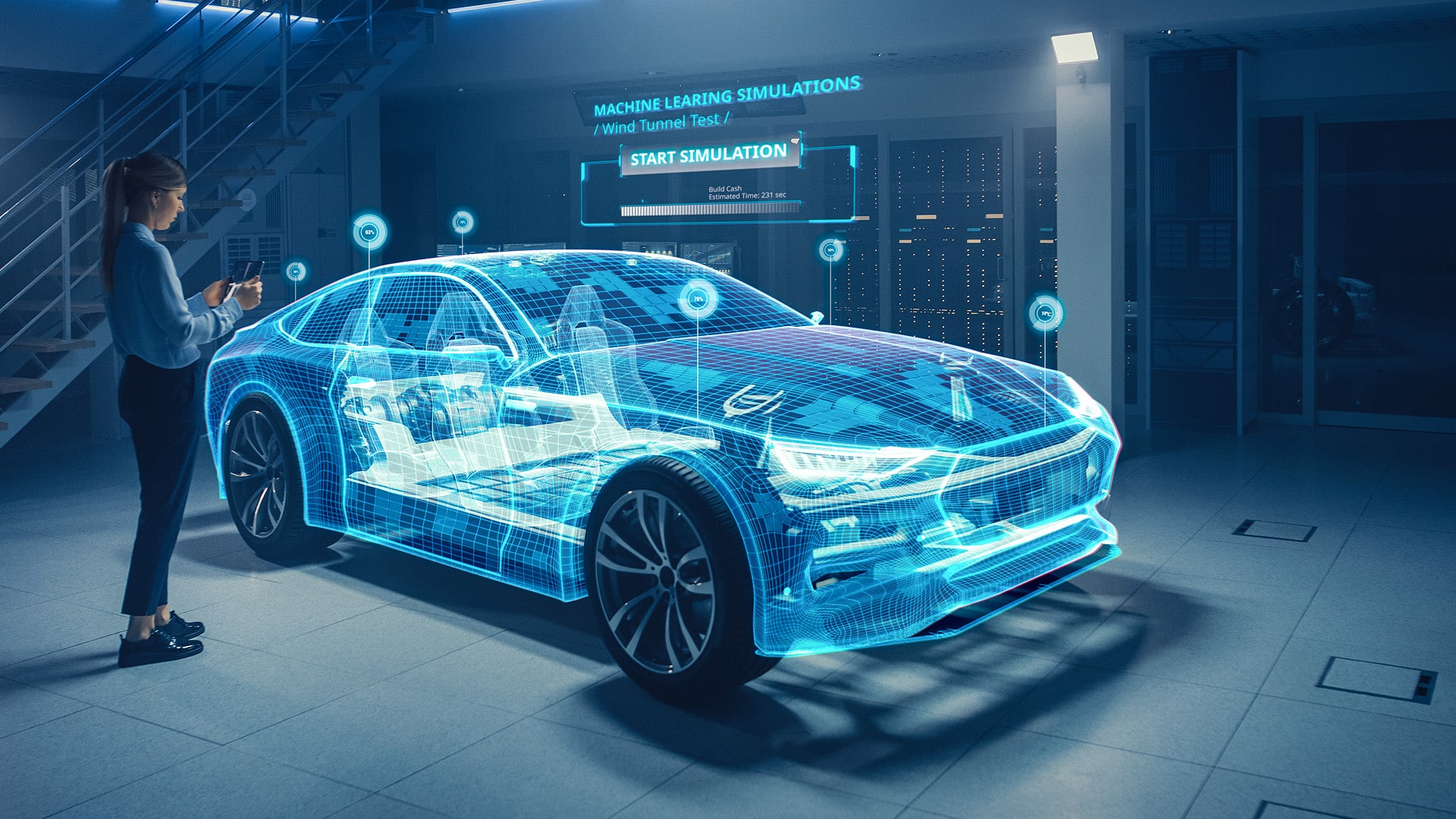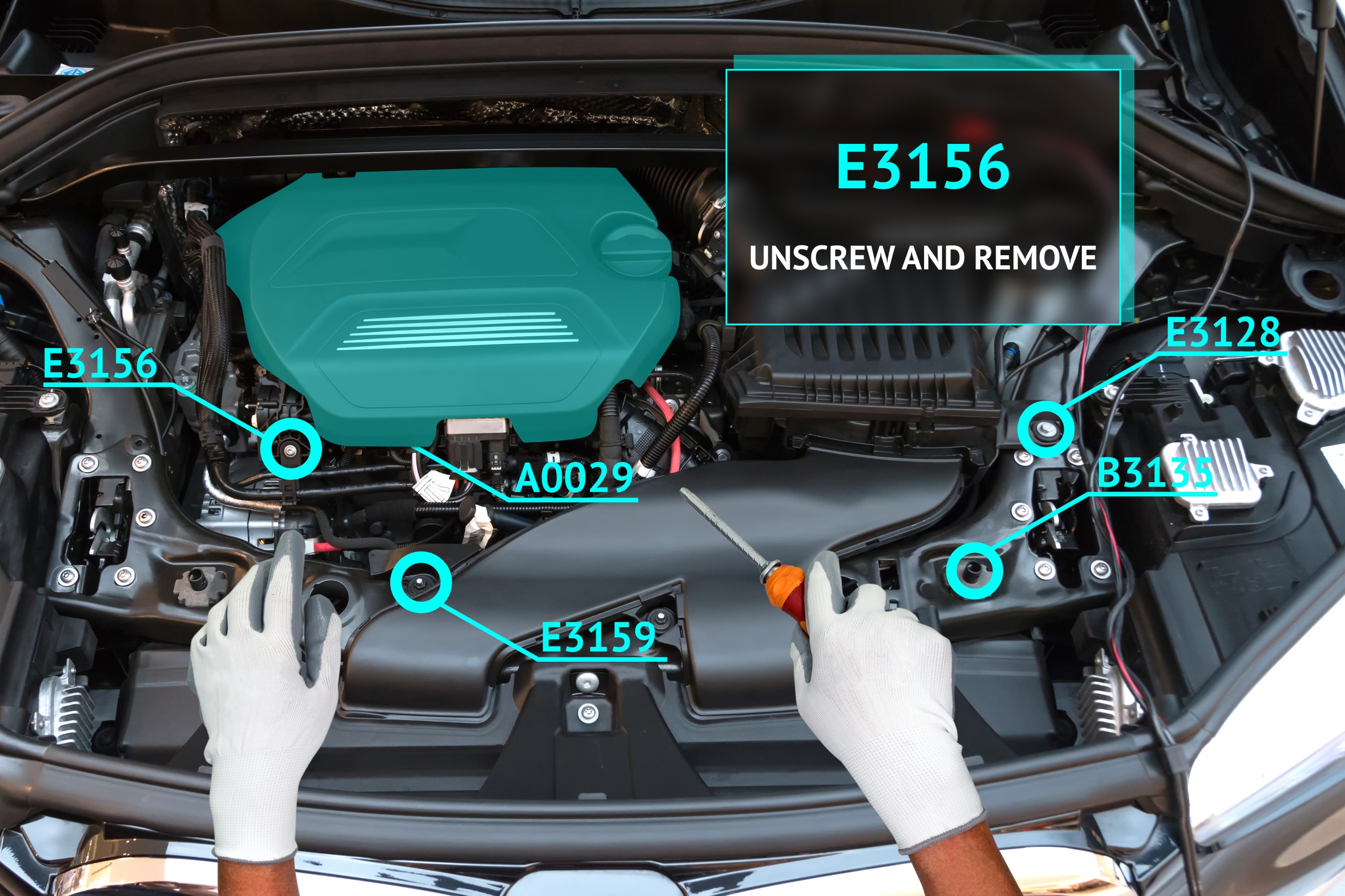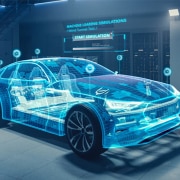Leveraging AR Technology for Automotive Innovation
Driving Demand for AR in the Automotive Sector

Augmented reality’s transformational powers in design, manufacturing, and consumer involvement drive its automotive popularity. AR technologies enable interactive experiences, including but not limited to virtual showrooms and heads-up display (HUD) systems.
The market of augmented reality in automotive will reach $673.6 billion by 2025. It shows the investment and confidence in AR’s ability to expedite assembly lines, cut upkeep times via 3D instructions, and improve training efficiency. So, AR is not simply a fad but a vital part of the automobile industry’s future for better operating efficiency and user experience.
Key Factors Fueling Demand
Smart Design: Augmented reality in automotive improves vehicle conception and development inventiveness. AR lets designers and engineers view and iterate on vehicle ideas in real life. It provides instant evaluation of design features in different situations without expensive and time-consuming physical prototypes. E.g., BMW’s Vision Next 100 concept uses AR to overlay virtual design advancements over existing models. It enables a more agile and iterative design process that can swiftly respond to input and changing design objectives.
Enhanced Comfort: Augmented reality diminishes driver distractions with real-time information in the field of vision. Virtual images may have fields of vision above 20 degrees. AR systems may display navigational cues, safety alerts, and vehicle diagnostics on the windshield. It helps drivers stay focused, lowers cognitive burden, and improves awareness. With navigation arrows on live camera feeds of the road ahead, Mercedes-Benz’s MBUX infotainment system shows how AR can merge data with the driving experience.
The Transformative Impact of AR in Automotive Industry

Revolutionizing the Design Process
Augmented reality in automotive design shifts the paradigm toward more efficient and accurate vehicle development. Designers may stack digital prototypes on actual objects or locations using 3D virtual-reality tools to make quick changes in 3D. Real-time visualization and interaction decrease physical prototypes, saving material costs and development time.
For example, tools like Gravity Sketch allow designers to create and model in 3D space with an easy interface. It speeds up the design process from idea to prototype. AR makes the design more collaborative by making changes immediately visible to all stakeholders. It causes a shorter development cycle that matches production realities and market expectations.
Redefining Marketing Strategies
With improved 3D visualization, augmented reality in automotive is altering how customers shop for cars by letting them examine automobile designs and features in depth. For instance, Porsche’s AR Visualizer software lets customers change car parameters in real time.
Furthermore, virtual test drives simulate driving conditions in various locales for an authentic purchasing experience. Volvo’s partnership with Microsoft HoloLens overlays digital information onto real-world settings to enable virtual but realistic vehicle interaction. These technological advances strengthen the customer’s decision-making process and expedite the sales funnel with a genuinely engaging examination of automotive innovations.
Optimizing Maintenance and Repairs
The use of augmented reality in automotive maintenance and repairs overlays real-time, 3D instructions directly onto vehicle components. It removes ambiguity from paper manuals and raises procedural efficiency. For example, Volkswagen’s Marta app and Porsche’s Tech Live Look use AR to guide technicians to problem locations and the steps for resolution. Moreover, AR headsets allow personnel to read schematics and assembly instructions without taking their eyes off the work. It lowers service times and boosts first-time repair rates.
Volvo uses AI-enhanced AR tools to accelerate end-of-line inspections for visual clues, warnings, and automated decision-making. It assures quality output with fewer human mistakes. Volvo’s AR inspection app updates and validates QA checklists in as little as one hour. So, augmented reality speeds up complicated automotive system training and increases worker productivity with clear, contextually relevant information when and where required.
Boosting Efficiency and Reducing Costs
Augmented reality in car manufacturing and quality control cuts costs and improves productivity with digital instructions directly into the work environment. It disregards paper manuals and human error. AR headsets display 3D models and assembly instructions to help technicians arrange parts and sequence procedures without frequent reference.
Using AR and AI, end-of-line inspections deliver real-time, accurate defect identification and quality evaluations. This method speeds up training, assembly lines, and first-time fix rates. For instance, augmented reality in automotive reduces training time by up to 75%. It helps vehicle makers stay up with the digital world while preserving integrity and security.
Enhancing Driver Safety
The use of augmented reality in automotive promotes driving safety while placing real-time navigational cues and speed limit data on the windshield. AR dynamically displays speed restrictions based on location and road type to advise drivers to change speeds.
The driver’s line of sight gets even better by navigational prompts, including turn-by-turn directions, lane guidance, and key alerts about road conditions or risks like abrupt curves or pedestrian crossings. This integration of details lowers interruptions and boosts the state of mind. It makes drivers safer by better anticipating and responding to their surroundings.
Explore FIC’s AR Technologies: The Future of Driving
FIC’s AR-HUD, a solution of augmented reality in automotive, uses LBS technology to display ADAS information, navigation, speed limits, and traffic alerts. The technology provides great contrast and brightness, rendering the display legible. It helps road safety while letting drivers focus on the road ahead with a projection distance of 3-50 meters and a FOV of 6-42 degrees.
The AR-HUD has low power consumption, single/double projection capabilities, and seven algorithms for road state mapping. It can accommodate 4-20L of volume. This breakthrough integrates important information into the driver’s natural line of sight. It makes driving safer and pushes metaverse integration in the auto sector. Visit FIC’s official website for more.





